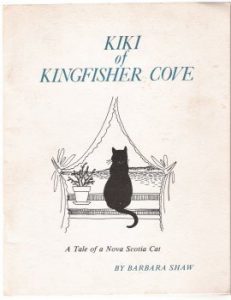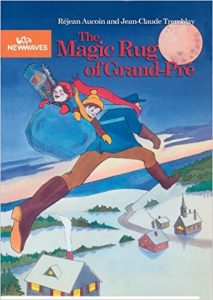French language version of A Proper Acadian. Set during the American Revolution, a young man from Boston is sent to Acadia and faces deportation.
Canada
Materials from Canada
Smoke Over Grand Pré
Smoke Over Grand Pré provides a glimpse into the lives of people who lived during the period that led up to the Acadian deportation. The eviction of Acadians from Nova Scotia by the English gove ment represents an important chapter in the history of Nova Scotia and of Canada.
Alison Dare, The Heart Of The Maiden
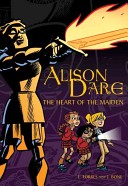
Alison Dare: Indiana Jones meets Lara Croft in fabulous, graphic adventures.Alison Dare is not your typical twelve-year-old. She’s the daughter of an archaeologist/adventurer and the masked hero known as the Blue Scarab. To top it off, she’s also the niece of an international super-spy; it’s no surprise that a craving for danger is in her blood! Unfortunately, her parents have locked her away at the prestigious St. Joan’s Academy for Girls, hoping that this would lead to a more “normal” life for their daughter. But despite all the strict rules at the school, Alison and her best pals – Wendy and Dot – somehow manage to find themselves involved in adventures that rival those of Alison’s globetrotting, planet-saving relatives. Whether it’s magic genies, super-powered bank robbers, or a dastardly baron bent on world domination,Alison Daredelivers the best thrills since Indiana Jones and more action than Lara Croft!
Tyranny
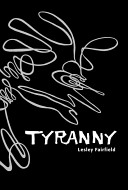
In Tyranny, brisk, spare text and illustrations that deal head-on with anorexia propel the reader along on Anna’s journey as she falls prey to the eating disorder, personified as her tormentor, Tyranny. The novel starts with a single question: “How did I get here?” The answer lies in the pages that follow, and it’s far from simple. Pressured by media, friends, the workplace, personal relationships, and fashion trends, Anna descends into a seemingly unending cycle of misery. And whenever she tries to climb out of the abyss, her own personal demon, Tyranny, is there to push her back in. The contest seems uneven, and it might be except for one thing: Anna’s strength of character has given rise to her deadly enemy. Ironically, it is that same strength of character that has the ultimate power to save her from the ravages of Tyranny. Brilliantly and realistically presented,Tyrannyis a must-read for anyone looking for a better understanding of eating disorders and for everyone looking for a compelling page-turner that is truly a story of triumph and hope.
Binky The Space Cat (Binky Adventure)
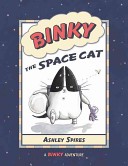
Binky is a space cat – at least in his own mind. He’s really a house cat who has never left the family “space station.” Unlike other house cats, Binky has a mission: to blast off into outer space (outside), explore unknown places (the backyard) and battle aliens (bugs). Binky must undergo rigorous training so he can repel the alien attacks that threaten his humans. As he builds his spaceship, he must be extremely careful with his blueprints – the enemy is always watching. Soon Binky is ready to voyage into outer space. His humans go out there every day and he’s sure they need a certified space cat to protect them. But just as he’s about to blast off with his co-pilot, Ted (stuffed mousie), Binky realizes that he’s left something very important behind … and it’s not the zero-gravity kitty litter. In the first book in the Binky Adventure series, graphic-novel readers will delight in watching where this lovable and quirky cat’s imagination takes him.
Kiki Of Kingfisher Cove
The Magic Rug of Grand-Pré
You Can Pick Me Up At Peggy’s Cove
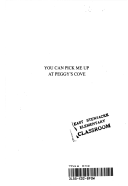
Ryan’s dad is having a midlife crisis. He went away for the summer to try to work through his problems, leaving his family behind. Ryan’s mother decides to send Ryan to Peggy’s Cove, the most beautiful cove in the world, for the summer to stay with his Aunt Fay, who owns and operates a store there. Peggy’s Cove is all right, Ryan thinks, if it weren’t so small and crowded with tourists.
Still, he manages to make friends. First, he befriends Drummer, a misfit. But hanging out with Drummer proves disastrous because it makes him behave in ways he never has before and gets him into trouble. Next, he finds friendship with fishermen Eddie and Wing Ding, who teach him how to fish. The time he spends with the two fishermen is the best moments of his visit. Even so, he still thinks of his father a lot and writes him a letter in hopes of getting his attention. After spending a summer apart, will their relationship ever be the same?
Queen of Hearts
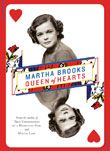
Marie-Claire Coté is fifteen-head-strong and full of life. It’s 1941, Canada is two years into World War II, and workers are scarce. So Marie-Claire pitches in on the family farm, tries to keep up with her school-work, and listening to stories told by her fun-loving hard-living uncle, Gérard. But the whole family is taken aback Gérard is diagnosed with tuberculosis and even more shocked when Marie-Claire and her younger brother and sister are all stricken with the disease and are sent to “chase the cure” at a nearby sanatorium located in the rolling hills of southern Manitoba. Marie-Claise fights her illness and longs for privacy in a place where there is none. She desperately wants to ignore the other “TB exiles” around her, especially her frail but irritatingly cheerful roommate Signy, who seems determined to become best friends. And then there’s fellow patient Jack Hawkings, the nineteen-year-old musician with the heart-stopping smile. Soon she discovers that the sanatorium is a world unto itself–a world in which loss can be survived, and friendship, and love can be found in unexpected places.
See the review at WOW Review, Volume 4, Issue 3
What My Father Gave Me
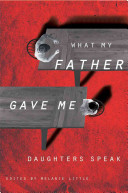
Passionate, compelling essays reveal how daughters see their fathers. Editor Melanie Little brings together seven outstanding women — including Susan Olding, Jessica Raya and Saleema Nawaz — to write brilliant, powerful accounts of father-daughter relationships during their teen years. These deeply personal narratives draw readers into raw, real-life experiences. One girl recalls the parade of men in her mother’s life until a man named Al unexpectedly becomes the father she never had. Another father’s abandonment leads his teen daughter to enter a string of doomed relationships with older men, fueled by her “pilot light of pure hatred.” Another reveals the harrowing secret she guarded as a teen: the sexual abuse she suffered at the hands of her father. One girl watches as the father she loves and respects struggles on the picket lines during a lockout at work and through an ensuing depression. Another daughter charts her own reckless behavior against that of her father’s, in search of a way to break the cycle. Gutsy and honest, these true stories invite readers behind secret doors as they celebrate the power of words to connect to the teen experience.

